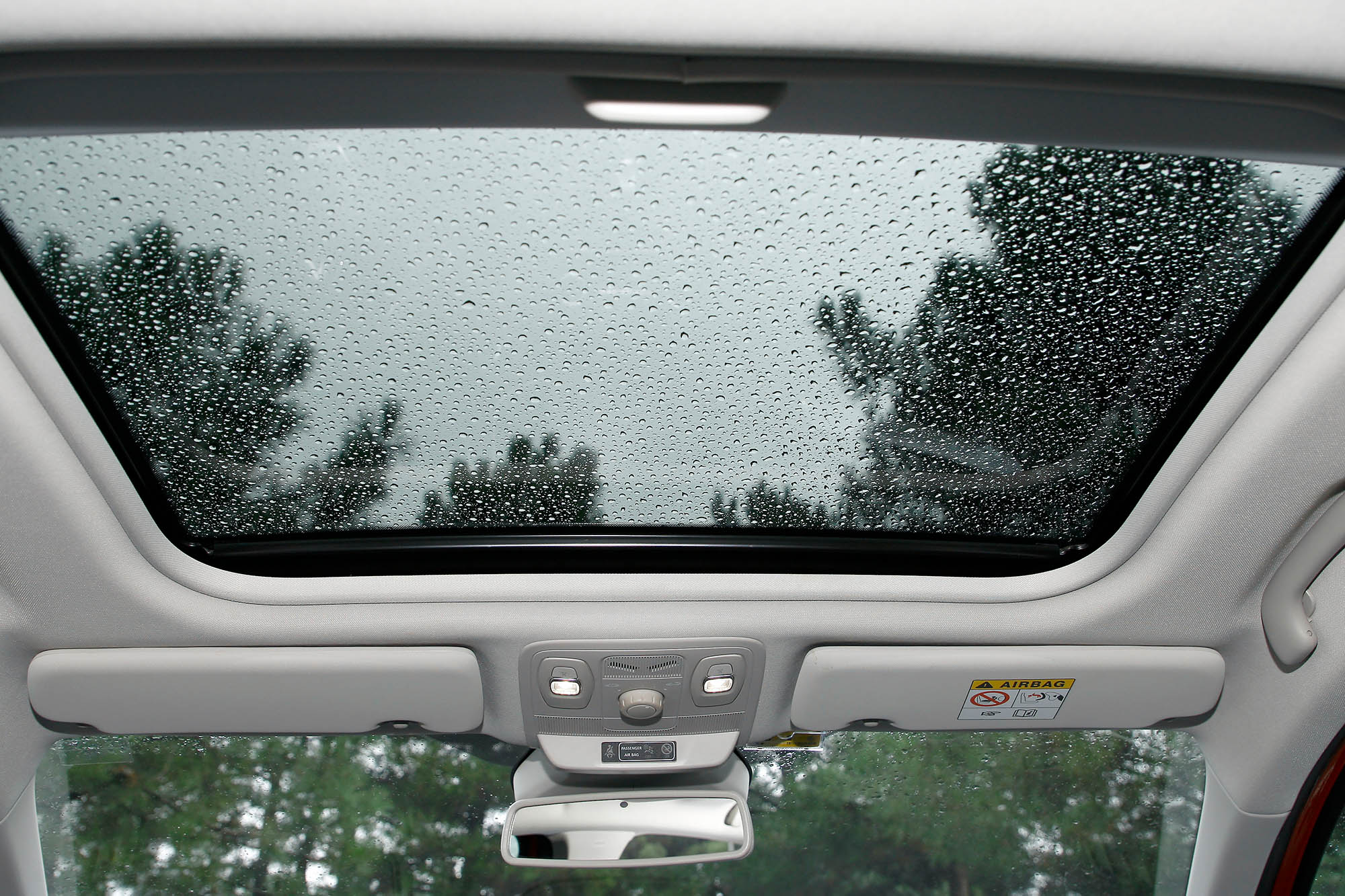3 Reasons Your Sunroof Might Be Leaking
Worn-out seals or out-of-alignment tracks can lead to leakage above your head.
 Shutterstock
Shutterstock
A sunroof can be a pleasant feature of an automobile, allowing extra light into the cabin or opening for more ventilation on a sunny day. But if you've noticed wet seats or other signs of water leakage on your vehicle's headliner, it's a good idea to address the issue before it causes more damage.
Blocked Drain Holes Can Cause Spills
The frame around your sunroof acts as a seal and a pan-styled drainage container to help capture and safely disperse any accumulated water. In most sunroofs, you'll find drain holes in the corners of the sunroof frame. These holes feed into drain hoses routed through the vehicle's body panels to allow water to escape. If those drain holes are blocked by dirt, debris, or leaves, they won't work properly anymore, and accumulated water can pool in the drainage container and spill into the cabin.
A quick inspection of the opened sunroof frame likely will give you a visual indication of obvious blockages, though it's worth consulting your owner's manual to locate the exact location of the drains. Try pouring some water down the hole and seeing if the drains function.
A do-it-yourself solution is to use string trimmer line from a garden trimmer to push through the blockage. Try some water again; if it drains onto the ground, your fix has probably succeeded. Although it might seem like a good plan to blow the debris out with pressurized air, this can cause the hoses to disconnect.
Worn or Perished Seals Can Lead to Leaks
The rubber or synthetic seals that help create a waterproof wrap around your sunroof age over time as they're exposed to UV rays and subjected to physical strain while opening and closing the panel.
If your seals are cracked or worn out, they may allow water leakage. Look for visible cracks or tears. If you find them, the seals likely need to be replaced, which can be a complex job that is probably best left to a professional.
Using a silicone-based seal lubricant on rubber seals around your sunroof can help extend the waterproof life of your seals. As a bonus, you can often use the same lubricant on the doors, windows, and trunk or liftgate seals to guard against additional leak points.
The Sunroof Track May Have an Issue
Sunroof mechanisms can be complicated, especially with larger sunroof panels on full-size SUVs. Some sunroofs deploy mesh air dams when they pop up, adding additional vulnerability to the system. The frame and track that help move a powered sunroof can become misaligned, which can also be a source of water leaks.
If you notice issues with the movement of your sunroof or cannot manually slide it shut as easily as in the past, this may indicate an alignment issue. First, troubleshoot the problem by thoroughly cleaning and lubricating the guides that help the sunroof move in and out of position.
Generally speaking, a mechanic should also be able to inspect the mechanism and possibly make some adjustments to ensure a better and tighter fit. If the motor no longer works on a power sunroof or frame parts are broken, they may need replacement.
Written by humans.
Edited by humans.
 Andy Stonehouse
Andy StonehouseAndy Stonehouse literally fell into the world of auto writing while working as a ski-town journalist, and has not looked back since. A childhood spent dealing with the eccentricities of a 1976 MG Midget has made any subsequent auto experience a more safe and reliable drive. He has been blessed with nearby mountain trails and snowy roads in Colorado to do TV-adventure-styled test drives on a weekly basis.
Related articles
View more related articles